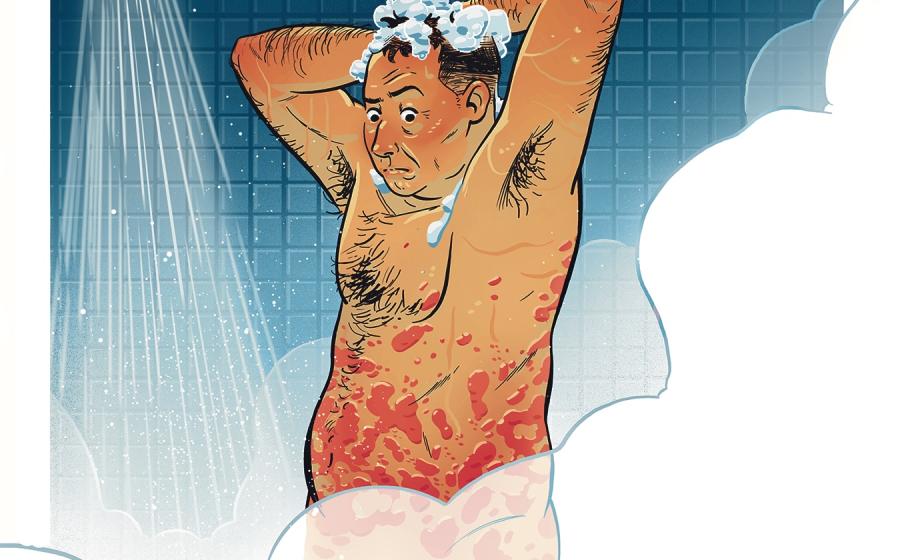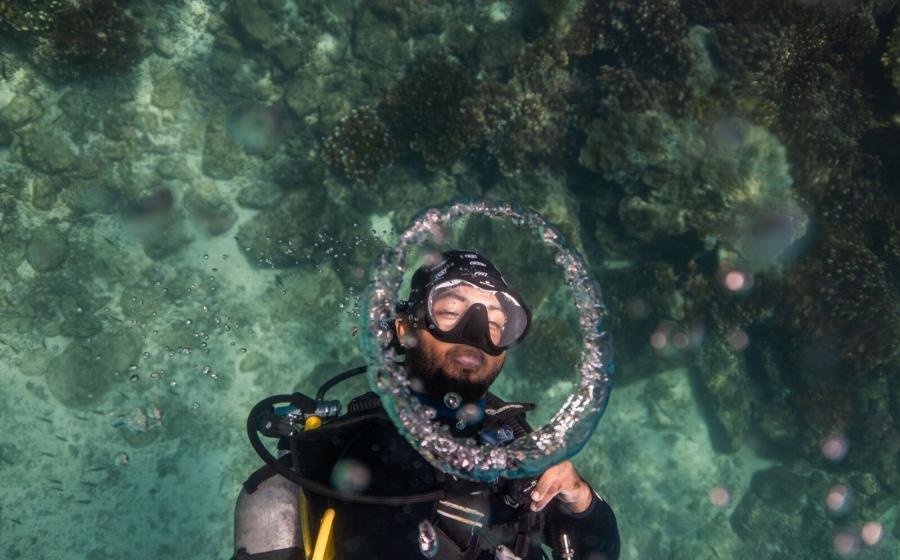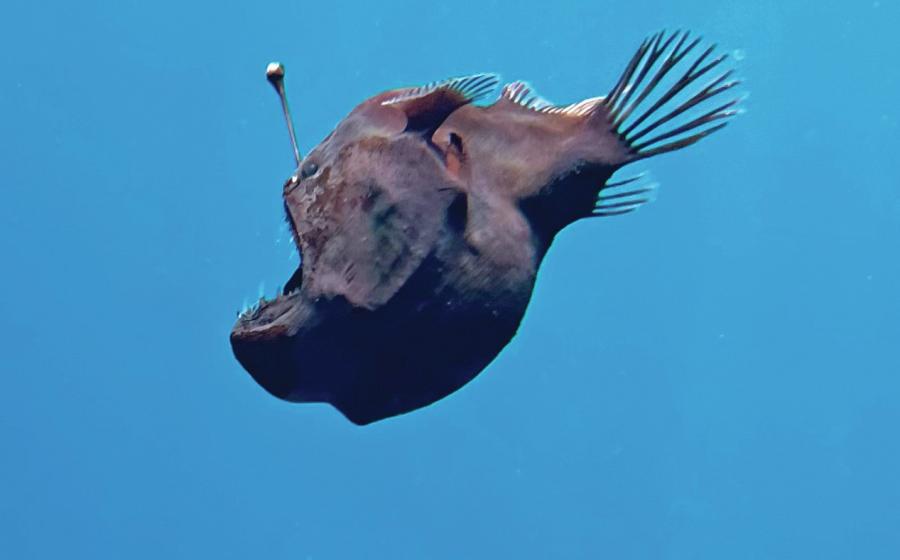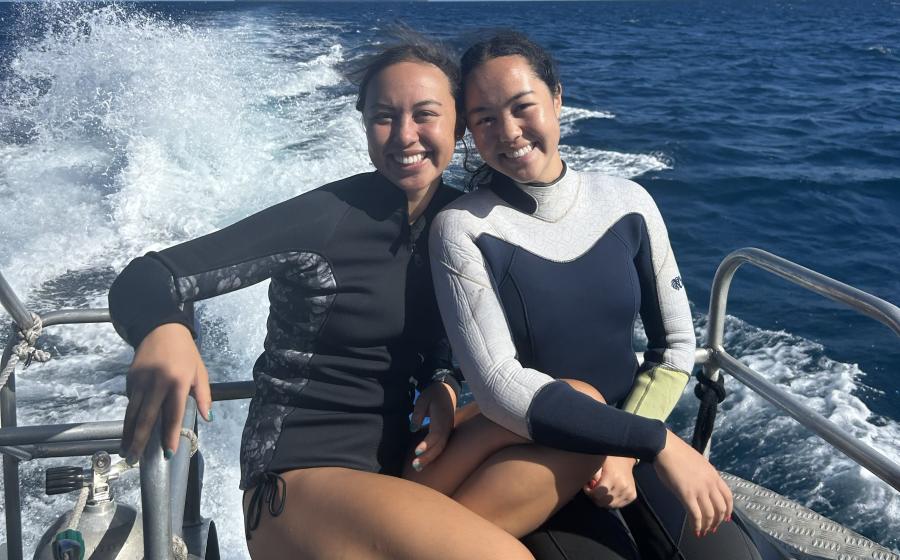Why You Should Always Be Prepared to Rescue Yourself When Diving

Annie CrawleyBecoming a self-reliant diver is especially helpful for divers, like photographers, that want to go slower than a group.
In order to become a great diver, you need time underwater in a variety of conditions.
It’s comparable to driving a car. When you learn to drive, you learn the rules of the road and have to pass written tests before you get behind the wheel to drive. Once behind the wheel, you drive first with the patient people in your life, to get comfortable in a variety of situations.
Once you are confident, an instructor tests your skills, issues a license and, boom, you are now a certified driver—yet still a beginner. It’s the experience behind the wheel—in a variety of situations—that gives you a feeling of self-reliance.
It’s the same for diving. You earn your certificate, but you still need to learn to dive in currents, cold water, warm water, on coral reefs or on wrecks. You need to learn to read maps, navigate, follow safe diving rules and adjust to conditions. You learn about nitrox and the benefits of different gas blends. Depending on your interests, there are courses from tec diving to citizen science. There’s a plethora of ways you can advance your skills diving with a divemaster or instructor to increase your confidence and competence after your initial open-water cert.
But unlike driving, no scuba police with squealing sirens show up if you reach your limits or break safe-diving rules. It’s up to us as certified divers to understand our equipment, follow the rules, know our limitations, plan our dive and dive our plan, all while taking care of ourselves and our buddies. All the fancy gear in the world won’t help you if you don’t have the foundation to use it. My favorite buddies are experienced divers—with the skills to take care of themselves underwater—because the mindset and capabilities of a competent diver are different from those of a beginner.
The self-reliant diver is both a mindset and a PADI specialty you can earn. The Self-Reliant Diver specialty course values the buddy system and teaches you independence, redundancy and the skills necessary for diving solo if needed.
As a dive professional, I enter the water as a self-reliant diver. While teaching open-water students, I’m mentally and physically prepared to take care of not just my students, but also myself. There’s no such thing as being overprepared. It’s an ideal specialty course—and not just for professionals—because the philosophy and skills apply to many different diving situations. I believe all divers should become rescue divers, and consider becoming self-reliant divers when ready—advanced divers as young as 12 with 20 logged dives can become rescue-certified. Advanced divers with 100 logged dives who are at least 18 are eligible for the Self-Reliant Diver course, the same number of dives needed to begin your instructor course.
Reasons vary for wanting to achieve this level of scuba diving. Many advanced underwater photographers and filmmakers like to have this skill level, as they tend to go slowly or may want to spend time with a subject and not hold up a group of fellow divers. Divers who travel without a built-in buddy also find it extremely useful—divers who can take care of themselves make the best buddies. People who cruise and own boats might need to dive solo due to mechanical issues, to free an anchor or remove marine debris from their prop.
When I teach parents and families to dive, I highly recommend advanced training. Parents need to understand they should feel extremely comfortable with their underwater skills before diving with their kids without a dive professional present.
Being a self-reliant diver allows divers to take care of themselves in an emergency situation. The Self-Reliant Diver course provides these skills and makes you think differently. It’s not necessarily just for diving alone—it prepares you for anything. Self-reliant divers carry redundant equipment for most emergency situations, including two dive computers, a spare mask, a delayed surface marker buoy (DSMB), and a pony bottle with a gauge and regulator for out-of-air emergencies. During the course, you learn to calculate your surface air consumption rate (SAC) so when you plan your dive, you know how much air you need to return safely to the surface using your pony bottle. You also learn to plan independent dives safely. Over three dives with your instructor, you use all the special equipment, and repeat skills and emergency situation drills. You also learn the importance of routines.
Whether you are taking a Self-Reliant Diver course or just taking more control as you gain more experience, create a routine before every dive. Check the tides, weather conditions and special site considerations. Review the dive map, plan your dive with your buddy, and prep your gear. Check your dive computer. Do you know how to set and read it? What is the purpose of your dive? Is your buddy in agreement? Do a thorough, methodical check on your equipment before diving. Know your limits, share idiosyncrasies, carry a dive light and have a slate so you can communicate. After your dive, debrief and log your dives. As you gain experience, you will become a confident diver.
Pro Tip
Deploying a DSMB from your safety stop on a dive is an important skill for dive travel, especially in unfamiliar waters. Often your dive guide takes the role of leader on drift dives and deploys this for divers. Every advanced diver needs to learn this skill so if you are ever separated from your group, the safety boat will be able to locate you.










